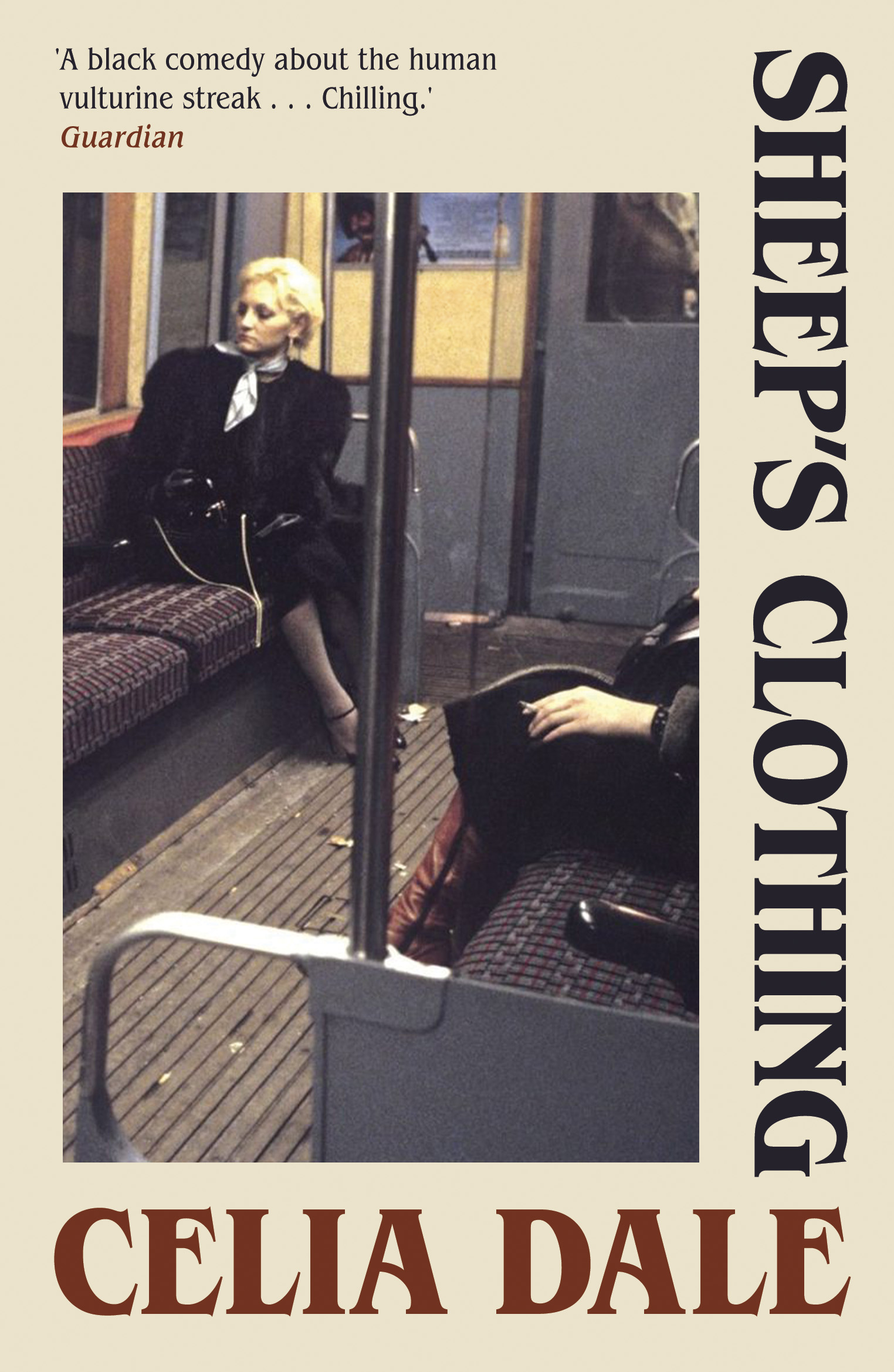Celia Dale published 13 novels between 1944 and her death in 2011. A majority of her these are often categorised – albeit loosely – as crime fiction, or else labeled as a kind of suburban horror.
Her astonishing skill, however, lay in the balance between genres: she wrote persistently along that tightrope of mundane normalcy and unsettling surreality, and deftly wove stories that leave the reader feeling uncomfortably disturbed – and yet unable to articulate precisely why. In her novels, people are rarely who they present themselves to be; intentions are obscured or hard-to-read; the narrative heart is mystery and enigma. Originally released in 1988, her last published novel, Sheep’s Clothing, is no exception.
We meet the two protagonists in the middle of a long-running money-making scheme. Grace and Janice – who befriended each other while serving time in Holloway Prison – assume the identities of representatives from Social Services, purporting to be bringing good news about increased pension payments to the door of elderly people living alone. Once inside, however, the vulnerable marks are doused with sleeping pills and robbed blind.
Grace runs the scheme more strictly even than the Prison Warden ran the prison, and Janice is living under her thumb, persistently subjugated and controlled through a campaign of belittling aggression. That is until Janice meets Dave at the pub. And then Grace meets Conroy. Their lives start to diverge (though they are still exacting their schemes and living in their one-bedroom flat together). Janice begins to work on building her courage; Grace begins to execute a more long-term plan. To emphasise this parting of ways, the second part of the book switches between multiple perspectives, and although we are still following Grace as she struggles with her master plan, we are also privy, for instance, to the private life of Janice’s boyfriend.
 The unrelenting tension-building is slow with an intense focus on the mundane particulars of characters’ lives, as opposed to big dramatic twists. Dale’s eye for detail ensures that the reader is never bored, but is instead drip-fed hints and clues as to what’s really going on: the objective truth somehow evasively poised between the series of alternative points-of-view. To this end, the chapters are strictly and carefully timed. For instance, we have a chapter that takes us through a three-hour window of Grace and Janice completing a con, and are assiduously shown every second of that time-frame, every movement that they make. Later, we are guided through the period between two of Janice’s dates with Dave: the boredom she feels of her working days, the way time stretches out as her second date encroaches, and every thought that crosses her mind in the lead-up.
The unrelenting tension-building is slow with an intense focus on the mundane particulars of characters’ lives, as opposed to big dramatic twists. Dale’s eye for detail ensures that the reader is never bored, but is instead drip-fed hints and clues as to what’s really going on: the objective truth somehow evasively poised between the series of alternative points-of-view. To this end, the chapters are strictly and carefully timed. For instance, we have a chapter that takes us through a three-hour window of Grace and Janice completing a con, and are assiduously shown every second of that time-frame, every movement that they make. Later, we are guided through the period between two of Janice’s dates with Dave: the boredom she feels of her working days, the way time stretches out as her second date encroaches, and every thought that crosses her mind in the lead-up.
This is done with great success – a triumph of the inner monologue. Janice leaves Dave’s car with an idea of how she will get him to open up, or Grace leaves Conroy’s with a plan to infiltrate his mother’s life; but the reader is given a teaser of their thought process, enticed to read on to see how they will enact their plans. Indeed, it is at the chapter-ends, in their moments of abeyant conclusiveness, that we find the most telling examples:
[Grace] turned away and went down the steps, opening her handbag to find her senior citizen’s travel pass. All the way home she sorted out what she had learned; it was not very much but enough to build on.
We are once more being teased, but without the drama of a more modern, televisual cliff-hanger, but with a softness akin to missing a stair or almost dropping your keys. Your stomach registers the risk with a flip, but you remain solid. In this way, Dale leaves us – at the end of a chapter – with more questions than with which we started: Why would Grace have purposefully tripped over an elderly lady? Why is Dave so different from all the other men both the reader and Janice meet? And the overarching question that the reader is presented with from page one: will they get caught?
As with any crime drama media that puts the criminal at the forefront of the action, Dale presents us with a conundrum: do we want them to be discovered and apprehended or not? That would bring the fun of the storyline to an abrupt close, and remove the tension completely, and yet the moral greyness is where Dale seems to be most comfortable. She invites us to live inside the mental space of characters we might otherwise feel compelled to judge, and once there we are not reprimanded for disliking them – in fact, quite the opposite. Grace is not presented to us with any expectation of sympathy and yet Dale keeps us with her long enough that we are invested in her schemes: we are part of the con, and we, perhaps secretly, want it to succeed.
Daunt Books has already brought out a refreshed edition of another of Celia Dale’s novels, A Helping Hand, which touches on similar themes of subtle suburban malice. More is welcome: it can only be a good thing that more people will become aware of such a writer, one who neatly traverses moral questions with a stony wit so redolent of 1980s Britain. Moroever, her work can cast brighter light on contemporary literary trends: her books sit alongside Otessa Moshfegh, Julia Armfield, and Eliza Clark with ease, providing vital history for the current appetite for unsettling themes, unlikeable women, and the defamiliarisation of the mundane.
- Sheeps Clothing by Celia Dale (Daunt Books, £9.99)
- More book reviews on theartsdesk















Add comment